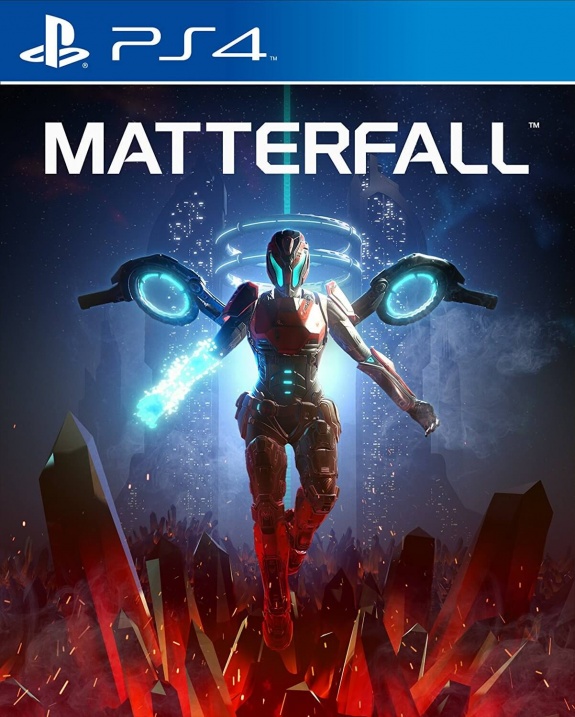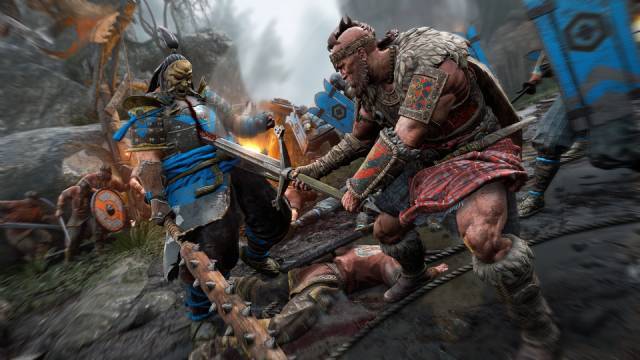Sadly, not quite – but it comes close. This pulsating platformer can be a real joy to play, but it’s not quite as pure as its twin-stick peer, and it can be frustrating at points. To set the scene swiftly: you assume the role of a female super-soldier who’s absolutely not Samus Aran. Your task is to… Well, it’s not overly clear in the 15 second intro movie, but basically there’s a weird alien substance that’s caused robots to go crazy, and consequently mankind’s trying to evacuate a swish-looking city it’s built on a faraway planet.
The plot doesn’t really matter: it primarily exists to allow the developer’s art department to go wild. This being a Housemarque title, it looks absolutely ridiculous, with the voxel effects that it’s become famous for used to satisfying effect yet again, and some intense 2.5D backdrops which show an abundance of carnage going on in the background. It’s the kind of glossy, 60 frames-per-second shizz you’d expect, and it’ll leave you pondering exactly how the PS4’s powering it all.
Not that you’ll have too much time to admire the scenery, of course. Matterfall is a hard game – potentially the hardest that Housemarque’s made since its Ikaruga-esque platformer Outland on the PlayStation 3. The challenge here comes from the amount of obstacles you’ll need to deal with: enemies are deadly and often need to be stunned by your dash attack, but there are also hazardous surfaces that you’ll need to avoid, as well as bullet emitting turrets that can’t be taken down. The difficulty, even on the “easiest” Rookie tier, is high.
And this may colour your first impressions because the controls aren’t exactly straightforward either. Most of the major inputs are mapped to the shoulder buttons, so that your thumbs can remain on the analogue sticks for movement and firepower. Dashing, as mentioned earlier in the review, is essential if you hope to survive – but one of the game’s main mechanics sees you using your Matter weapon (L2) to detonate vortexes left behind by dead enemies.
Basically, foes will move in waves, and if you successfully stun and shoot down some of them, they’ll leave behind bombs which you can ignite, causing chain reactions. Throughout all of this, you’ll need to dash through bullet hell, and you may even need to use your Matter weapon to create makeshift surfaces to stand on. When it all comes together you’ll feel like the coolest person alive, but you’ll need to have patience if you hope to “git gud” in what is at times a brutal game. There may only be 12 levels, but you’ll need superhuman reactions to get through them on the highest difficulty.
As alluded, part of the thing that makes the game less accessible than its peers are the controls. The setup works well once you get used to it, but the mapping of key commands like jump to R1 can be difficult to wrap your head around; several hours on we’re still instinctively tapping X when we want to leap. It’s one of those games where you slip into a trance-like rhythm at times, but once you make a mistake, you’ll feel like you’re trying to rub your tummy and pat your head until you re-discover your groove.
Which isn’t so much a problem with the game, it’s just that it’s… Like, we say, hard. Augmentations can be unlocked when you discover certain humans – yes, it wouldn’t be a Housemarque title without incapacitated civilians, would it? – and these can be mixed and matched to suit your own personal preferences. Some of these attachments can be used to buff a certain ability – like prolonging your slow-mo Overdrive attack – while others actually unlock bonus weapons, like shotguns or grenade launchers which reload on a timer.
Boss battles conclude each of the game’s three worlds, but as always it’s the leaderboards that will keep you playing. Matterfall has a customarily complex scoring system that involves multipliers which reward perfect play, as well as speed and thoroughness. Climbing to the top of the scoreboards will require dedication, and that’s where the replay value comes from, of course. If that doesn’t appeal, then the game may not be for you, because one run will take you less than three hours to see through.
To be fair, this is a lighter package than its predecessors. There’s enough enemy variety to keep the fairly long levels interesting, but not a massive amount. And outside of some zero-g segments, the title doesn’t really do all that much to switch up the way stages flow – even the environments can be quite samey if we’re honest. It’s not the end of the world by any stretch, it’s just an observation – it feels like this game has been made in a shorter timeframe with perhaps a smaller budget than the likes of Alienation and Resogun.
Conclusion
Matterfall’s not the best game Housemarque will release in 2017 – but then, the virtually flawless Nex Machina was always going to be a tough act to follow. There’s a lot to like about this side-scroller’s pulsating platforming levels, and when it all comes together you’ll feel like you’re on top of the world. An unorthodox control scheme means that it’s not the most accessible game, but once you slip into a rhythm it feels right. Unfortunately, it can be hard to stay in the groove, and while those looking for a challenge will undoubtedly relish the practice required to master this menacing sci-fi affair, it will put others off.



